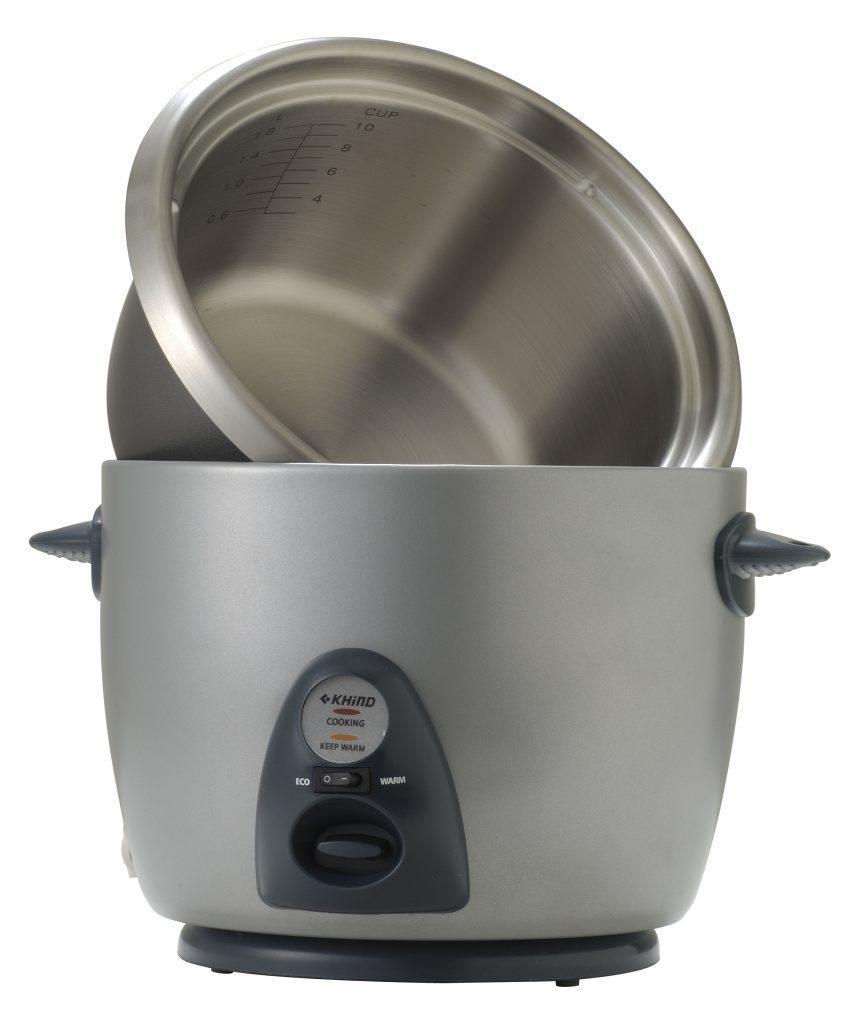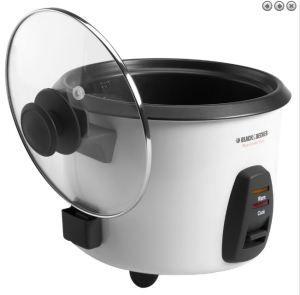Can A Rice Cooker Cause Fire?
Rice cookers are a kitchen staple in many homes. They make cooking rice and other grains easier, but can they cause fires?
Yes, a rice cooker can cause a fire. In recent years, there have been reports of rice cookers causing fires.
These fires usually happen because the owners fail to read the instructions.
However, you shouldn’t be alarmed, rice cookers do not pose any more risk than other kitchen appliances.
It’s important to follow instructions for use and cleaning when operating a rice cooker or cooking anything else in it.
For an electric rice cooker, make sure to unplug it when done cooking. Avoid leaving the appliance plugged in if you’re away.
Some people leave their rice cookers plugged in all night. This can pose a risk if flammable liquids or materials were spilled on them during use.
Rice cookers typically have an automatic shut-off as well as a keep warm setting.
If your rice cooks until all of the water has been absorbed and overcooks to some degree, this will increase the chances of dry kernels combusting.
Reasons for A Rice Cooker Catching Fire
Rice cookers are usually safe, but they can cause fires if not used correctly. The rice cooker can catch fire when:
Cooking
Using rice cookers with extension cords or power strips and plugging in more than one appliance.
Using aluminum foil as a makeshift steamer basket when cooking rice that might catch and spread the fire.
Never cook rice in a container that has a loose lid, such as an aluminum foil bowl! This will cause steam to get trapped and can lead to a fire hazard.

Rice should never be cooked for more than 20 minutes due to the risk of bacterial growth from overcooking.
Keep an eye on your rice to make sure it doesn’t overcook. Stop the cooking process as soon as you see bubbles forming around the surface.
Rice cooking’s that are left on a heating element after cooking will overcook and could potentially cause fires.
If your rice is not finished cooking yet, remove it from the heat and allow it to cool completely before removing the lid.
Cleaning
The most common problems include people trying to clean the cooker with detergent or other household cleaners that are too harsh for delicate parts like rubber seals and heating elements.
To keep your rice cooker working safely, make sure to follow the instruction manual for cleaning and use.
Cleaning instructions vary from one brand of rice to another. Don’t attempt any other methods if you aren’t sure how they will affect your appliance!
You should never submerge a rice cooker in water; instead, use a damp cloth and dish soap to clean it.

Rice cookers should always be unplugged and cooled before cleaning them. Allow the cooker to cool for at least 15 minutes, or until you can touch it without burning yourself.
Remember to always unplug your rice cooker before cleaning it and never submerge the appliance in water!
Storage
Rice cookers should be stored away from any kind of heat source that could cause damage.
If you have children in your home, make sure they know not to touch the appliance when it’s plugged in!
To avoid electrical mishaps, make sure all appliances that are plugged in have a GFI (Ground Fault Interrupter) outlet installed.
If a fire does happen, turn off any power sources that are connected to electrical appliances in your home (including lights).
Also, keep an eye on the smoke detector so that it will alert you if there’s a fire.
Read: When Does A Rice Cooker Know When To Stop?
How To Use a Rice Cooker Safely?
Safety when it comes to using a rice cooker revolves around the food and environment.
Food safety ensures that how you cook and store rice from a cooker does not interfere with your health.
Environmental safety relates to keeping the kitchen and home free of incidents such as smoke, smell, and fire hazards.
The following are a few tips to keep in mind when using your machine:
- The first and foremost step is to purchase a rice cooker that has been approved. This will ensure you are using it safely without any risk of electric shock or fire hazards.
- The next safety measure is to read the manufacturer’s instructions before operating your new appliance, which comes included with most models.
- You need to clean out the inside of your cooker before using it for the first time, and every time after that.
To be on the safe side, use a small amount of soap and water or lemon juice in order not to damage its coating. Then rinse thoroughly and dry.
- Never operate the cooker with wet hands or while holding food inside, as this can cause electric shock.
- Make sure you clean it after each use by washing and drying its exterior before storing (again, never use it with wet hands).
- Don’t operate a rice cooker if the cord is damaged.
If you suspect that your machine has been dropped, have someone inspect it for damage before using it again.
- Never remove an inner pot from its aluminum or stainless-steel outer shell until after cooking and steaming are complete because this can cause a dangerous release of steam.
- Be sure not to overfill the pot with rice or you’ll end up with an overflowing mess on your stovetop!
- You should never plug the machine into an extension cord, as this can create too much heat and cause damage.
It’s also a good idea not to overload your pot by adding more than two cups of uncooked rice per cup of water.
- After you cook your rice, make sure to always turn off the power and either unplug it or wait until all of its steam has dissipated before opening any doors or removing the cooking bowl.
This will help prevent burns from hot water vapor that can come out in large quantities when taking the timer on a regular stovetop cooker.
- The last, but most important safety step is to never cook rice and leave the cooker unattended.
The heat of cooking can cause the plastic handles on your pot to melt or start a fire with other objects nearby that are combustible.
- Most importantly, have fun exploring different varieties of recipes for rice!
How To Operate a Rice Cooker
Rice cookers are a fantastic alternative to using boiling water on the stovetop for cooking rice. They offer several benefits, including greater safety and convenience.
The first thing we need to do is understand some of the fundamentals of how a rice cooker works.
I will start by explaining the different parts of a rice cooker and their function.
Inner Cooking Pot
There is an inner cooking pot, which is made from either stainless steel or non-stick-coated aluminum. It sits inside the outer casing that holds all the other components together.
The inner pot sits inside an outer casing that holds all the other components together. Both pots have their functions which include trapping heat and helping the food cook.

You should always remember to make sure the inner pot has enough water before starting your meal so you don’t burn the rice.
Thermostat
The thermostat measures how hot it needs to be for perfect results so that it can maintain a consistent temperature.
Lid
The lid is used to steam the food while cooking. It also helps trap in some of the heat that will keep everything warm until you are ready to eat.
The rice cooker can also be used for cooking other types of dishes as well, not just rice and grains.
There is a steaming option that you will find on most models that is great when preparing vegetables or fish.

So How Does a Rice Cooker Work?
A rice cooker works by heating the inner pot with electricity and adding water to it.
The water boils, creating steam that will cook your food or in this case, rice.
It usually comes with an instruction manual. The manual provides details on how much liquid should be added.
Conclusion
The rice cooker is an essential part of many households. It allows users to cook white or brown rice as well as porridge, soup, stew, cakes, jellies, and oatmeal.
It can also be used to steam vegetables and fish.
They also keep the food warm after it has been cooked. You can also reheat rice and chilled foods refrigerated for later use.
The rice cooker is easy to use. It is an excellent device for those living alone or in small households where space may be limited.
Care should be taken when using rice cookers as they can cause a fire if left unattended.



